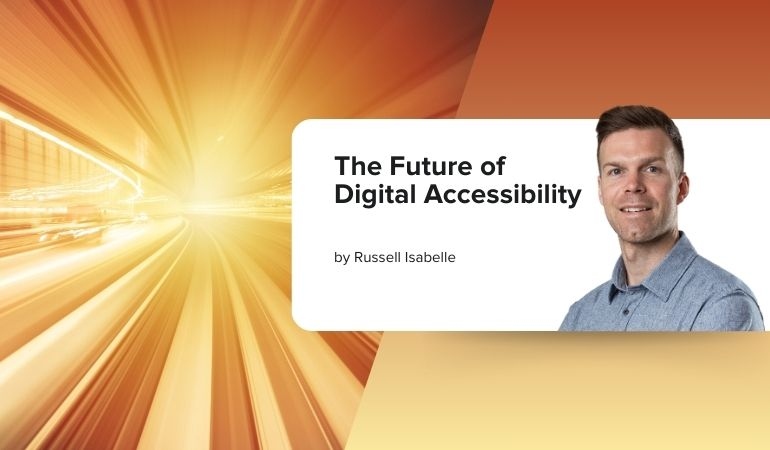Technology is advancing rapidly, supercharged by AI. We’re entering an era where AI will surpass human learning capacities, unlocking solutions to challenges once deemed impossible. This new frontier holds immense possibilities across travel, education, productivity, healthcare and accessibility.
In my previous articles, I explored the history and current state of web accessibility, including key findings from the 2025 WebAIM report. Now, it’s time to look ahead and explore how we will break down barriers, offering equal access to digital spaces for people with disabilities—whether permanent, temporary, or situational.
Key Transformations AI Could Bring
As technology evolves, its potential to enhance accessibility is vast. Here are some key transformations we might see:
- Agentic AI: AI can take over everyday tasks like form-filling, navigation, or scheduling—providing hands-free assistance for users with motor impairments or cognitive differences. This concept is already being explored through projects like Project Mariner and Operator, which show how AI agents could act on behalf of users to complete complex digital interactions.
- Real-Time Communication: AI has the potential to transform how people with sensory disabilities—such as hearing or vision—interact online. Through instant transcription, live sign language translation, and contextual visual descriptions.
- AI Avatars and Identity: AI-generated avatars can enable users to create digital identities that reflect their personality, mood, or communication style—offering valuable support for people with speech impairments, anxiety, or neurodiverse conditions.
- Eliminating Plug-ins: Instead of relying on third-party accessibility tools, AI-powered web browsers could deliver built-in, adaptive support—dynamically adjusting content, layout, and interaction methods based on individual preferences and abilities.
- WCAG Obsolescence: Using the internet through an AI agent or adaptive browser could make rigid accessibility guidelines like WCAG less central—shifting user experience to real-time personalisation, where AI adapts content to each user's specific needs.
AI Accessibility Projects
Several innovative AI-powered projects are already bridging the accessibility gap. Here are a few standout initiatives making a real difference:
Project Euphonia
An AI-driven Google initiative aimed at improving speech recognition for people with conditions like ALS, cerebral palsy, or Down syndrome.
Seeing AI
A project under Microsoft’s AI for Accessibility program, Seeing AI is a talking camera app that helps blind and low-vision users by describing people, text, and objects in real-time.
SignAll
Designed to bridge communication between deaf individuals who use American Sign Language (ASL) and hearing individuals who do not know ASL. It translates ASL into text and spoken language in real-time using AI technology.
What’s Next?
The future of accessibility is in the hands of innovators. We need UX design experts who understand accessibility and developers who can leverage technology to work together. Identifying the challenges faced by users with disabilities will be key to making informed decisions and addressing their needs. With the right expertise onboard, and the help of AI, we’ll break down barriers and create practical solutions never seen before.





